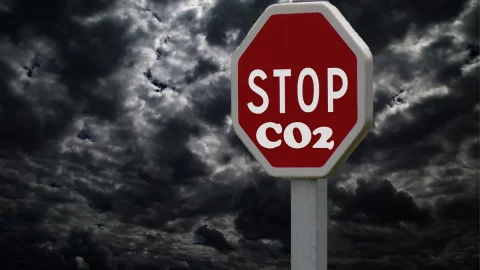THEworld economy he's leaving. Or rather: it restarts in its second engine, which is the China. Both the OECD leading indicator and the coincident PMI data (the composite is at its highest since November 21) show a significant acceleration of the Asian giant, which will draw behind all the economies that gravitate around it. Japan, South Korea, Vietnam, Indonesia, Singapore and Malaysia all saw activity indices improve in November.
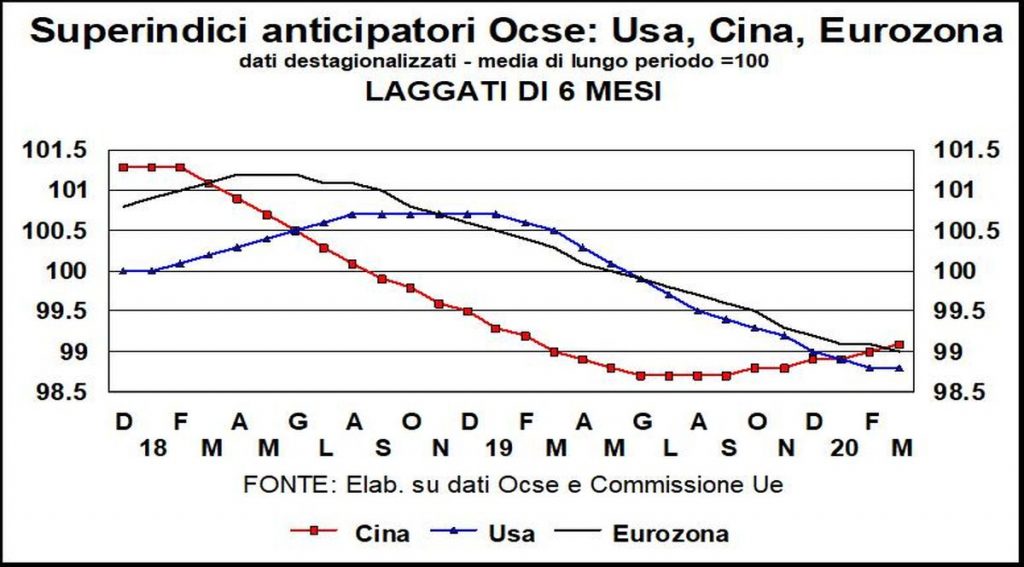
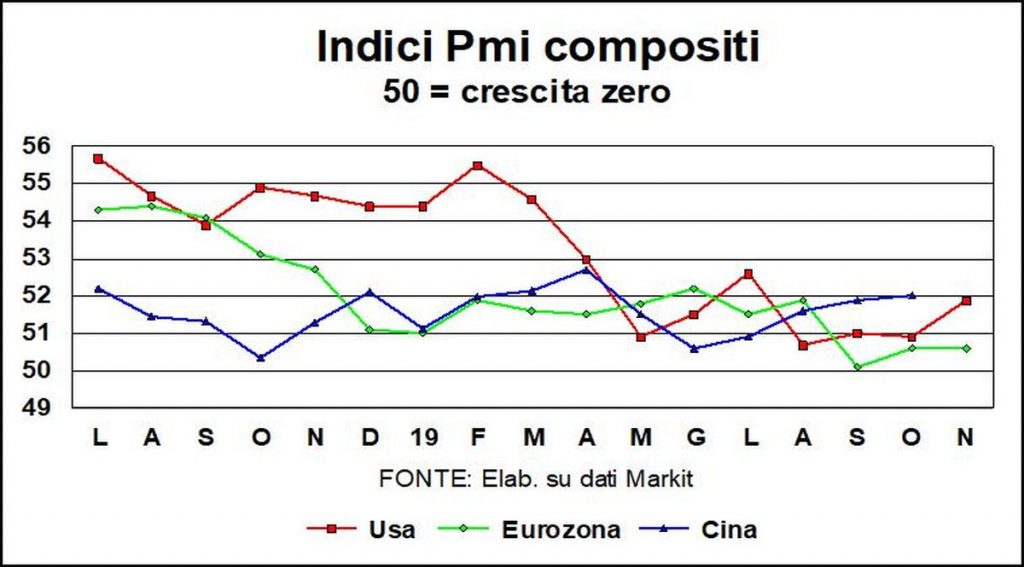
At the other extreme is theeuro area, which remains glued to one semi-stagnation. manufacturing continues to withdraw again with great speed, and in November it was the turn of the Czech Republic to suffer the blow of the difficulties of German industry, together with Italy and the Netherlands. How far there is to go before seeing the end of the tunnel for Teutonic manufacturing (and conserve for its suppliers) reminded us of the fall in industrial production in October: -1,7% monthly activity in manufacturing ( after -1,3% in September); rates of contraction surpassed only in the Great Recession. And the new decline in orders (-0,4% on September) means that the turnaround won't happen anytime soon.
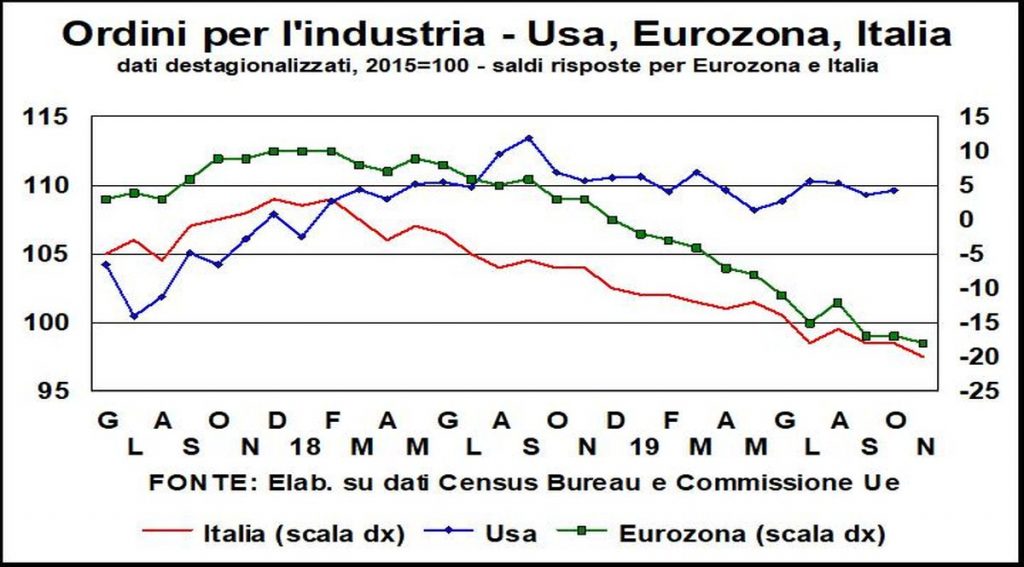
Il car black hole it is gobbling up demand and production capacity; if we consider that an electric car has components that are a fraction of those with an internal combustion engine and require much less maintenance, the destruction of added value and employment is evident and will unfold for many years, in industry and in services. Raining in the wet, the crisis of the car is added to that of banks, employing 1,8 million people; according to some estimates they will have to be cut by a quarter. There will certainly be greater efficiency and productivity, but the morale of families and consumers will not benefit from the performance of the labor market, because new jobs will be created but less secure and less paid. In general, even if the job at the bank is no longer (and for some time now) a safe job for life, anxiety spreads. Consumption suffers from this: retail sales in volume fell by 0,6% per month in October, after -0,2% in September, so that the annual change almost halved compared to the summer (to +1,4 %).
Added to this is the unknown factor of Brexit, which is not said to be dissolved by the vote of 12: if the erosion of the Tory advantage continued, we would have another blocked parliament and we would go to a new referendum; if instead Johnson manages to win, other cracks would open within the Kingdom which would become much less United (separation of Scotland, Northern Ireland and, perhaps, Wales). The stress for now is paid above all by theBritish economy, with the composite PMI in the contraction area and confidence underfoot. The negative waves are felt on this side of the Channel.
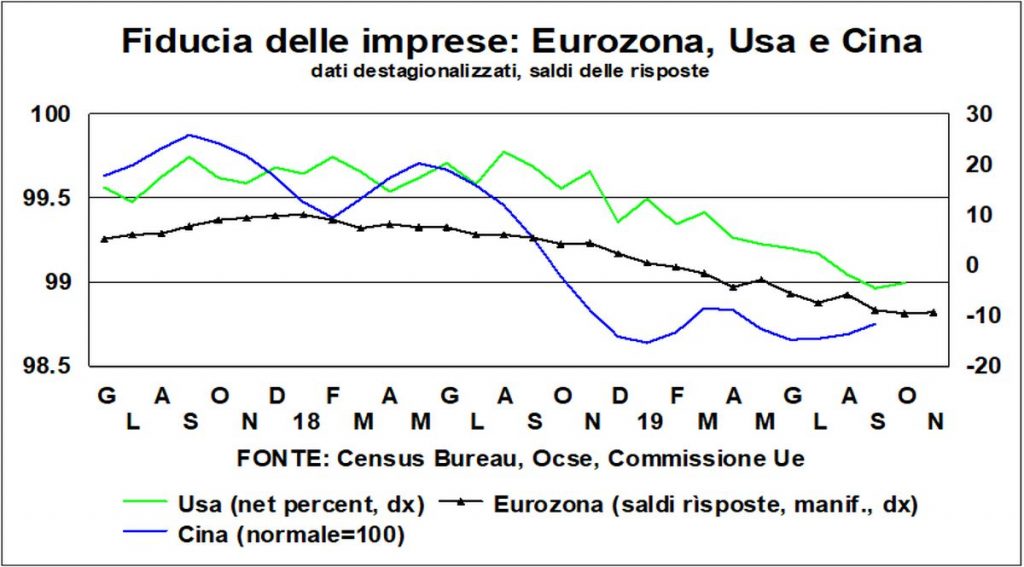
In the middle between the two poles, the positive and the negative, there are the USA, which remain on that path of moderate growth (around 2%: to be signed by us Europeans!) which for the FED is the best of all possible worlds. November brought mixed signals, actually. In the two versions, ISM and Markit, the SMEs it has once again widened significantly both in manufacturing and in the tertiary sector. Who is telling the truth? Markit is more reliable, due to the representativeness of the sample, in illuminating the dynamics of the American economy. However, these are not perky numbers, rather modest.
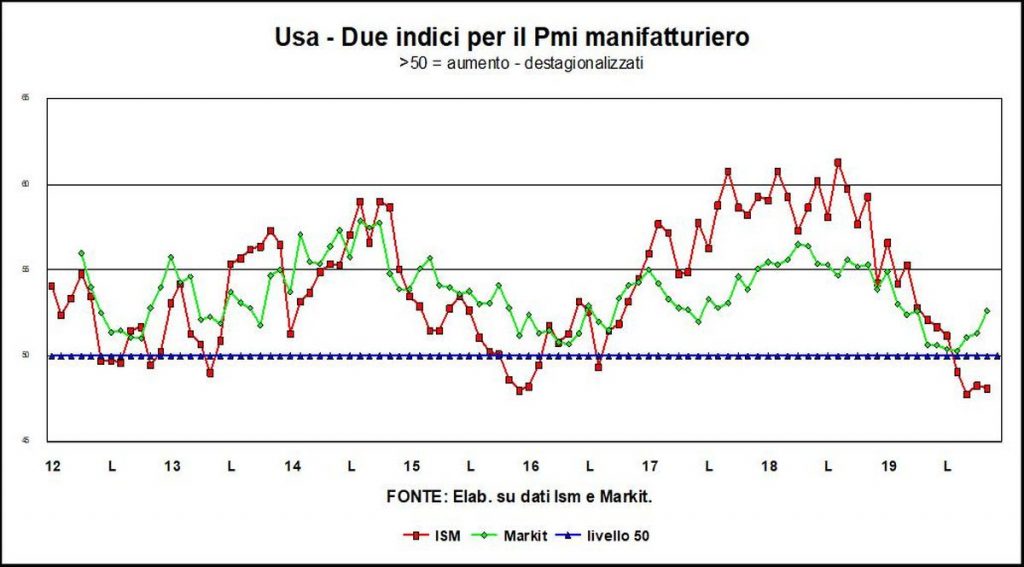
The the is once again given by the consumer spending, but the statistics are polluted by the GM strike (while in the Eurozone they have really started pulling the oars in the boat). The job machine grinds employment increases of 1,6% per year (first eleven months of 2019), without slowing down since 2018, and with the 3,0% increase in weekly wages it leads to a +4,6% in total wages (+2,8% real). Meanwhile, there has been a lively increase in orders, long-term and otherwise: a promise of higher future production.
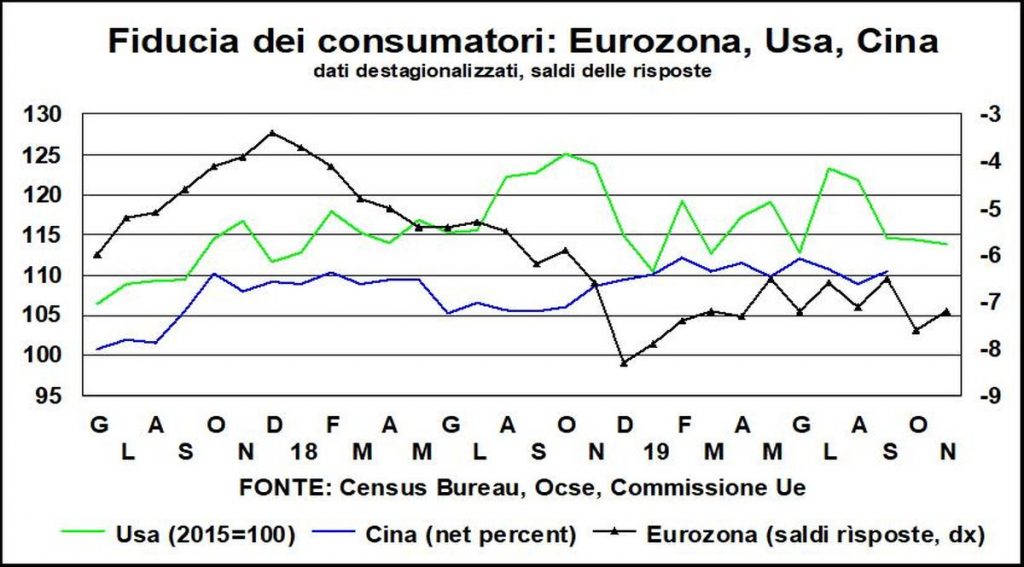
It is a global picture in progress: the global composite it rose to 51,5 from its 44-month low hit in October. But there's not much to celebrate. Especially with the self-proclaimed "balanced genius" tweeting tariff wars against the whole world (and thank goodness we're not trading with Mars yet!).
La Italian ship in this stormy sea it takes on water, but manages to do a little better than Germany and is close to the euro area as a whole. There confidence of companies has returned to decline, together with the judgments on orders; those in the automotive supply chain are blocked by the German decisions to abandon diesel and go electric. The stocks they continue to be cut, but less quickly than before and this pushes up the GDP. THE consumption they achieved a strong increase in the third quarter (+1,6% annualized), thanks also to the basic income effect, which will already disappear in the fourth; all the more so as household confidence fell sharply in November. While investments other than construction are falling back. He continues it political fibrillation it doesn't bring back the desire to spend.

